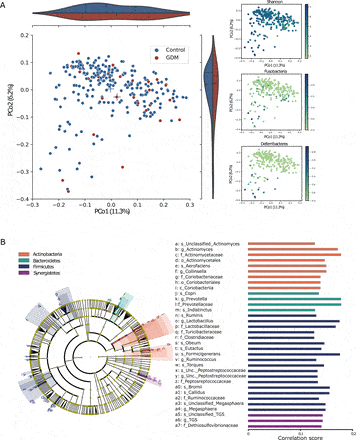A new study by Prof. Omri Koren of Oni Bar-Ilan proved that intestinal bacteria can help diagnose gestational diabetes early in pregnancy. Early diagnosis can reduce unwanted side effects in mother and baby

A new study conducted at the Faculty of Medicine in Safed, Bar-Ilan University, found that gestational diabetes can be diagnosed months before the time when it is usually discovered. Prof. Omri Koren headed a team of Israeli and international researchers who demonstrated that gestational diabetes (GDM) can be diagnosed as early as the first trimester. Prof. Yoram Luzon from the Department of Mathematics and the Brain Center at Bar-Ilan University also participated in the research.
Gestational diabetes mellitus (GDM) is a condition in which women without diabetes develop glucose intolerance during pregnancy. About 10% of pregnant women around the world suffer from gestational diabetes, which is currently diagnosed in the second trimester of pregnancy. This new study is one of the first to show reliable prediction of this pregnancy complication months before the time it is usually diagnosed.
There are marked differences in the gut microbiota (the population of bacteria found in the intestines of humans and animals) between women in the first trimester of pregnancy who later develop gestational diabetes and those who do not. These differences are related to markers of inflammation, where among women who develop gestational diabetes, a higher level of inflammation and lower levels of beneficial metabolites were found.
In the study, samples of feces and serum were collected from pregnant women during the first trimester of their pregnancy. The microbiota, metabolite, inflammation and hormone profiles were characterized. Diet, smoking, and other lifestyle habits were recorded, and clinical/medical data were collected from digital health records.
Using the results of these characterizations, combined with other collected data, Prof. Yoram Luzon, from the Department of Mathematics and the Gonda Multidisciplinary Center for Brain Research (Goldschmidt), built a computational learning model that can accurately predict which women would go on to develop gestational diabetes and which would not. .
The researchers then demonstrated in animal models that transferring the first trimester feces of women who went on to develop gestational diabetes leads to the transfer of the diabetic phenotype to bacteria-free mice, indicating that the gut microbiome has a role in mediating the development of the disease.
The research findings are not specific to the population. The microbiome model, for example, can predict gestational diabetes in Chinese women, and the results obtained from the mice have been replicated in Finnish and American groups.
Prof. Koren from the Faculty of Medicine at Bar-Ilan University says that "Identifying women at risk of gestational diabetes in the early stages of pregnancy may make it possible to provide unique recommendations for the prevention of the disease - currently through a change in lifestyle and possibly in the future through a specific pre-, pro-, and post-biotic supplement" . If it is possible to prevent gestational diabetes, there will be a significant reduction in the undesirable consequences of gestational diabetes, for the mother and the offspring, both in the short term and in the long term, and this will benefit families around the world.
The study was published in the journal good.


More of the topic in Hayadan:
